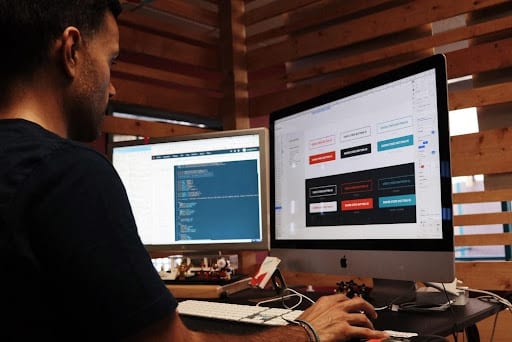Anyone who is even vaguely familiar with the world of e-commerce and digital marketing should be aware that content marketing has taken centre stage in these modern times. Not only have countless articles touched upon this subject, but studies have shown that an incredible 86 per cent of business-to-client marketers rely upon content creation to increase their brand awareness. So, it only stands to reason that variables such as search engine optimisation, the presence of long-tail keywords and relevant material are critical.
Professional website design can impact the efficacy of any content marketing strategy. A poorly engineered layout may determine the outcome of a specific campaign. How will bespoke web design solutions affect the content found within subsequent pages? Let us examine five key factors as well how each can contribute to the ultimate success of your growing business
1. All About Online Accessibility
One of the thinnest margins between success and failure could very well depend on how easy the website in question can be accessed. Did you know that the average consumer will spend no more than 2.6 seconds to determine if they want to continue browsing? Today audiences are more demanding than ever in terms of fast loading times and the type of information that is displayed.
Those who are immediately provided with relevant and actionable details are much more likely to take further actions (such as navigating to different pages, requesting information or placing an order). Whether referring to a traditional web page or a mobile-responsive site, a digitally aerodynamic presence will help the internal content to shine.
2. Layout, Aesthetics and Visual Appearance
Even high-quality products will fail to appeal to end-users if they are presented poorly. The same holds to website design. Eighty eight per cent of all users will not return to a portal if it does not boast a user-friendly edge. The main problem here is that updating content regularly is often required; leading to a cluttered and less-than-optimal appearance.
All materials need to be segmented so that they are presented in a palatable and pleasant manner. This includes establishing borders, breaking up text with images and creating dedicated web pages to deal with the new subject matter. Not only will a clean visual appearance imbue the site with a sense of professionalism, but readers are much more likely to actively engage with the content in question.
3. Readability
Curating readable content is one of the foundations of a worthwhile SEO strategy. Unfortunately, some business owners still feel as if they should be catering to the search engine as opposed to the human reader. This can prove to be a costly mistake.
Content needs to be curated organically. It should also be fashioned in such a manner as to overtly appeal to the audience in question. Here are some powerful suggestions to keep in mind:
- Define the goals of the content.
- Know your reading audience.
- Visualise what the average reader is looking to gain from perusing the material.
- Answer questions and explain how your products and services can solve problems.
- Use stories to provide a more personalised edge.
- Brainstorm new ideas regularly.
Additionally, readable content involves keeping the visitor entertained. Long blocks of text can be particularly boring. The same holds with highly technical pieces as well as material that includes more fluff than fact.
4. Seeing is Believing
We touched upon the notion of creating readable content in the previous section and another factor which can influence this appeal involves the other types of media that happen to be present. Let us remember that we live within a visually oriented society. This is why it is important to supplement written content with other actionable sources of information. These can include:
- Static images
- AR-powered media (such as 360-degree views of a product)
- Clickable infographics
- Videos
There are several reasons for the observations mentioned above. Perhaps the most relevant is that the growing number of individuals are now accessing websites via portable devices such as tablets and smartphones. They often wish to interact with graphical media as opposed to scrolling through seemingly endless blocks of text. Indeed, research has suggested that 54 per cent of all consumers prefer to engage with media content as opposed to written material alone.
Another important point to mention is that this type of visual material can help to break up the layout of a website, to enhance its aesthetic appeal and to reinforce any information that may be mentioned within the text itself.
5. An Intuitive Layout
It is a foregone conclusion that user-friendly websites are always associated with higher levels of engagement. Those who can easily find content are much more likely to be interested in what it is that you have to say. Furthermore, users are now basing their initial impressions (at least partially) on how the website appears at first glance. Here are some useful suggestions to adopt sooner as opposed to later:
- Ensure that the main menu is found at the same location on each page.
- Different pages and categories should be displayed.
- Drop-down menus can be employed to save space.
- Any written content should be appropriately spaced to avoid the perception of clutter.
- Hyperlinks can be used to redirect visitors to other relevant pages and/or sections.
We can think of these elements as digital “window dressings” which help to reinforce the quality of the content itself.
A Powerful Synergy
Website design and content creation can enjoy a mutually beneficial relationship if approached correctly. This is why any business that hopes to attract a loyal client base over time should make it a point to adopt the suggestions outlined above. If content is king, quality web design represents the throne itself.
Author Bio: Paul Towler is the Technical Operations Director at SmartOffice, an office automation provider who has helped many businesses install e-commerce website solutions.

Hello, My name is Shari & I am a writer for the ‘Outlook AppIns’ blog. I’m a CSIT graduate & I’ve been working in the IT industry for 3 years.
